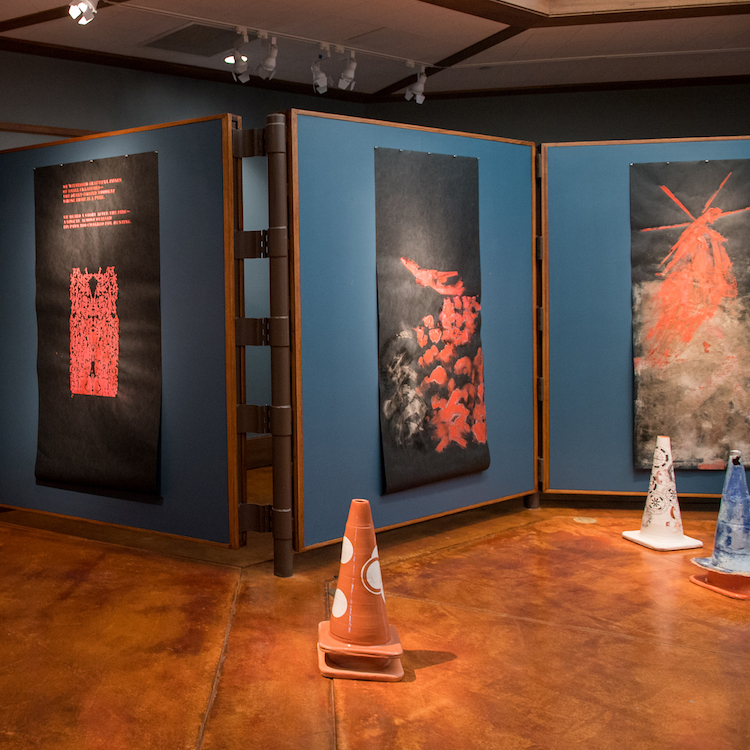In Amiko Matsuo’s Pyrometric project, she placed her ceramic safety traffic cones among the fires along the chaparral in the Southern California landscape where they would be so-called “chaparral fired,” while others have been fired with a dusting of ash gathered from previous fires. These not only emphasize the cyclical nature of fire, but also reference the importance of ash glazes in ceramic arts history. The cones were on display in 2017 at Ann Foxworthy Gallery at Allan Hancock College. (Oct 24 – Dec 1, 2017).


The project began in 2013 when Matsuo was in Ventura and was forced to evacuate from the Springs Fire, the Santa Maria Sun reported. Matsuo says the project traces the story of fire in the environment, from traditional indigenous burning practices to the intense firefights where housing has edged into more fire-prone city fringes.
“That got me thinking a lot about the place where we live and how we live in a place where we contend with natural disasters. For us here, it’s wildfires. I was interested in the question of how art mediates between people and nature…I was thinking about how people respond to nature.”




The project acknowledges an interesting paradox––even though wildfire is perceived as destructive by society, it is also imperatively transformative with fire playing a key ecological role in the development and perpetuation of chaparral communities. Acknowledging this dichotomy, Matsuo used pinecones and traffic cones in order to delineate “safe” and “danger” zones, the gallery writes.
Traffic cones mark edges between safety and danger, footpaths of humans and animals, and hidden environments revealed after fire lays the landscape bare. A third reference to cones is the one most essential to ceramists: the pyrometric cones that are placed in the kiln during firing to gauge temperature and alert the potter that a necessary degree of heat has been reached.
The Santa Maria Sun reports Matsuo enlisted the help of Ventura County firefighters to expose the safety cones to the high heat and smoke of controlled burns.



Matsuo heads the college’s 3D/ceramics program––a studio space where knowledge of fire is essential to the transformation of damp, earthen clay into hard-fired pottery.




Love or loathe this exhibition from the world of contemporary ceramic art and contemporary ceramics? Share your thoughts in the comments below.

Add your valued opinion to this post.